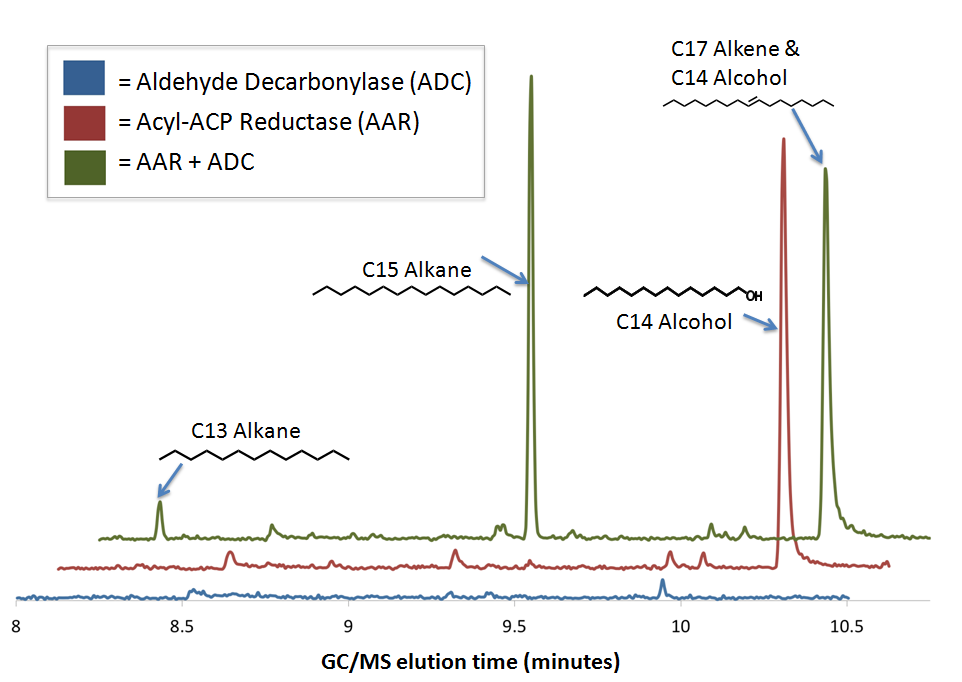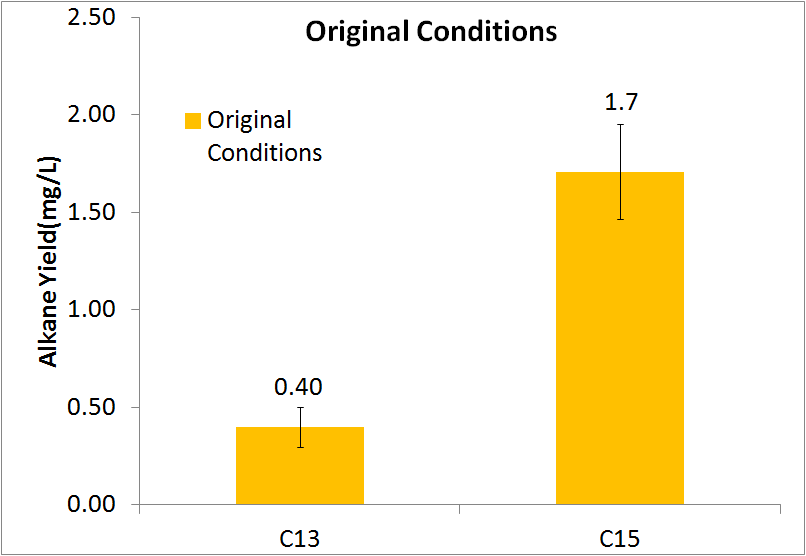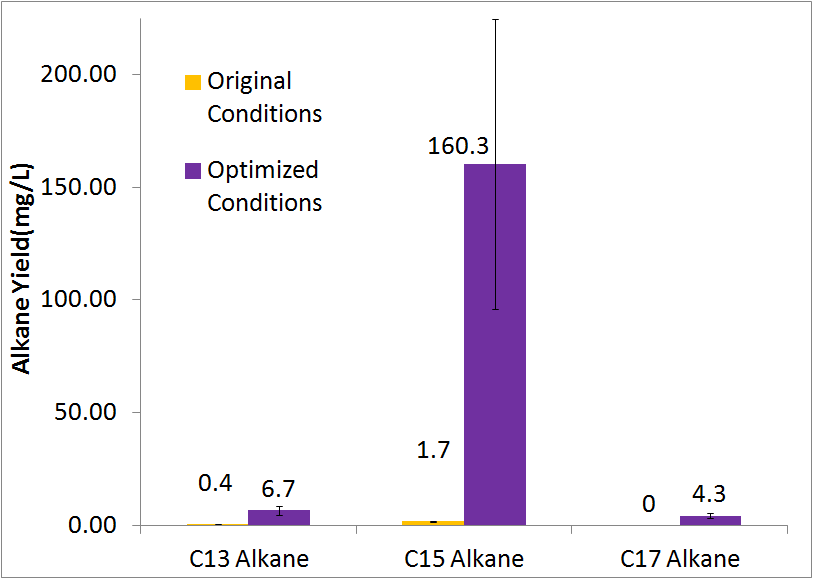Team:Washington/Alkanes/Results
From 2011.igem.org
Contents |
GSNS Analysis Shows Alkane Production Works
We preformed GC-MS analysis on cell cultures expressing both Acyl-ACP reductase (AAR) and Aldehyde Decarbonylase (ADC). to act as controls and in order to show that the alkane production system is working as expected, we also analyzed cell cultures expressing either only AAR, or only ADC.
No significant hydrocarbons peaks in samples extracted from cells expressing only AAR
No significant peaks are found on the AAR-Only control GC plot within the time range that we expect alkane signal based upon GC-MS runs on chemical standards (8-10.5 minutes). This is expected, as E. coli does not normally express native decarbonylase enzymes.
No significant hydrocarbons peaks in samples extracted from cells expressing only ADC
No significant peaks are found on the ADC-Only control GC plot within the time range that we expect alkane signal based upon GC-MS runs on chemical standards (8-10.5 minutes). This is expected, as E. coli does not normally produce any long chain length aldehyde substrates.
Initial Quantization
C16-Alcohol production by cells expressing AAR
The GC plot from the extraction from a cell culture expressing only AAR shows a significant peak at 10.2 minutes corresponding to the C16 alcohol (as confirmed by comparison of the peak's MS spectra to a reference library). Wild-type E. coli produces multiple aldehyde dehydrogenases that convert aldehydes to alcohols. The production of C16 alcohols in cells expressing AAR (but not in cells expressing only ADC) is consistent with AAR reducing even chain length Acyl-ACPs into even chain length fatty aldehydes, which are further reduced by aldehyde dehydrogenases to the alcohol.
C17 Alkene production occluded by C16-Alcohols
Detecting the C17 alkenes was occluded by this C16 alcohol production, as the C16 alcohol elutes at a very similar output time. During optimization we found that the laboratory cloning strain XL1 Blue, did not produce commensurate quantities of C16 alcohols, potentially allowing for further quantification of C17 alkenes.
Optimized Production
Alkane production by cells expressing ADC and AAR
In cells expressing ADC and AAR, we saw peaks corresponding to the C13 (8.2min) and C15 (9.2min) alkanes, as well as a peak at 10.2 minutes that contains both the C16 alcohol and the C17 alkene. The fact that the C17 alkene and C16 alcohol peak overlaps with the C16 alcohol peak makes quantification of C17 akene yields impossible, but we have sufficient evidence to determine that both molecules are present in the 10.2 minute peak( the earlier section of the peak has an MS spectra consistent with the C16 alcohol, and the later section is consistent with the C17 alkene). The C13 and C15 alkane peaks showed MS spectra highly consistent with C13 and C15 alkane reference spectra. In addition, both alkane molecules eluted off of the GC at the same time as C13 and C15 alkane standards, further increasing confidence that the 8.2 min and 9.2 min peaks do correspond to the C13 and C15 alkanes. Odd chain length alkane production is what is expected from our system, as ADC removes a carbonyl group from even chain length aldehydes produced by AAR, yielding an odd chain length alkane.
Quantification of alkane yield
In order to be able to know how much alkane was being produced by our E. coli, we spiked known amounts of alkane into cell cultures known to not produce alkanes. We then extracted using ethyl acetate, and analyzed extracts using GC-MS. Since peak area corresponds to the amount of each substance present, we used these GC plots to make a standard curve that allows us to convert peak area into an absolute amount. To determine how much alkane was being produced by our alkane production construct, we grew up 3 E. coli cultures expressing ADC and AAR in a standard M9 media (link), and analyzed using GC-MS.
 "
"





